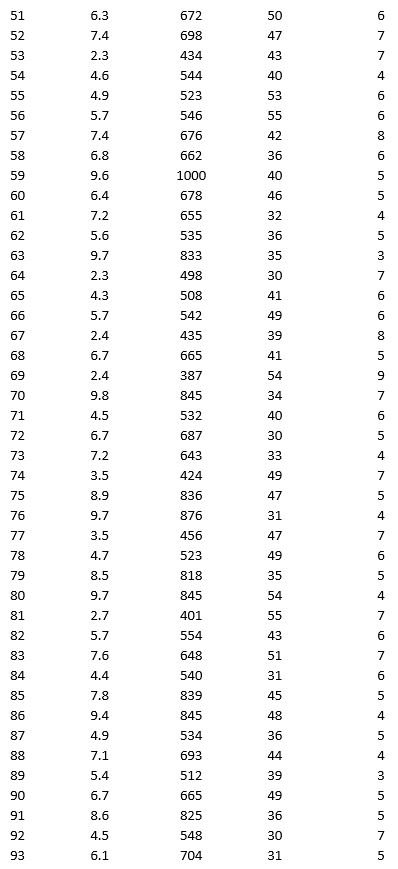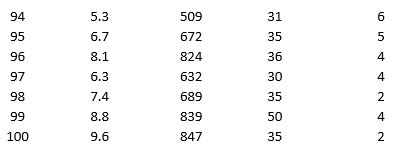Essay
As part of the quarterly reviews, the manager of a retail store analyzes the quality of customer service based on the periodic customer satisfaction ratings (on a scale of 1 to 10 with 1 = Poor and 10 = Excellent). To understand the level of service quality, which includes the waiting times of the customers in the checkout section, he collected the following data on 100 customers who visited the store.



For the above data, apply k-means clustering using Wait time (min) as the variable with k = 3. Be sure to Normalize input data, and specify 50 iterations and 10 random starts in Step 2 of the XLMiner k-Means Clustering procedure. Then create one distinct data set for each of the three resulting clusters for waiting time.
a. For the observations composing the cluster which has the low waiting time, apply hierarchical clustering with Ward's method to form two clusters using Purchase Amount, Customer Age, and Customer Satisfaction Rating as variables. Be sure to Normalize input data in Step 2 of the XLMiner Hierarchical Clustering procedure. Using a PivotTable on the data in HC_Clusters, report the characteristics of each cluster.
b. For the observations composing the cluster which has the medium waiting time, apply hierarchical clustering with Ward's method to form three clusters using Purchase Amount, Customer Age, and Customer Satisfaction Rating as variables. Be sure to Normalize input data in Step 2 of the XLMiner Hierarchical Clustering procedure. Using a PivotTable on the data in HC_Clusters, report the characteristics of each cluster.
c. For the observations composing the cluster which has the high waiting time, apply hierarchical clustering with Ward's method to form two clusters using Purchase Amount, Customer Age, and Customer Satisfaction Rating as variables. Be sure to Normalize input data in Step 2 of the XLMiner Hierarchical Clustering procedure. Using a PivotTable on the data in HC_Clusters, report the characteristics of each cluster.
Correct Answer:

Verified
Below is the Pivot table on the data in ...View Answer
Unlock this answer now
Get Access to more Verified Answers free of charge
Correct Answer:
Verified
View Answer
Unlock this answer now
Get Access to more Verified Answers free of charge
Q7: One minus the overall error rate is
Q9: The estimation of the value for a
Q10: Which of the following is true of
Q11: A research team wanted to assess the
Q12: A bank wants to understand better the
Q15: As part of the quarterly reviews, the
Q16: The lift ratio of an association rule
Q17: As part of the quarterly reviews, the
Q19: As part of the quarterly reviews, the
Q38: _ refers to the scenario in which